There’s something very cozy about walking into your kitchen and seeing fresh garden herbs and flowers hang drying in bundles. Air drying herbs is a cost-effective and energy-efficient way to preserve fresh herbs; however, this drying method doesn’t work well for all herb varieties. Tender-stemmed herbs tend to lose color and flavor if they aren’t dried fast, but woody-stemmed herbs dry beautifully with hang drying and air drying methods.
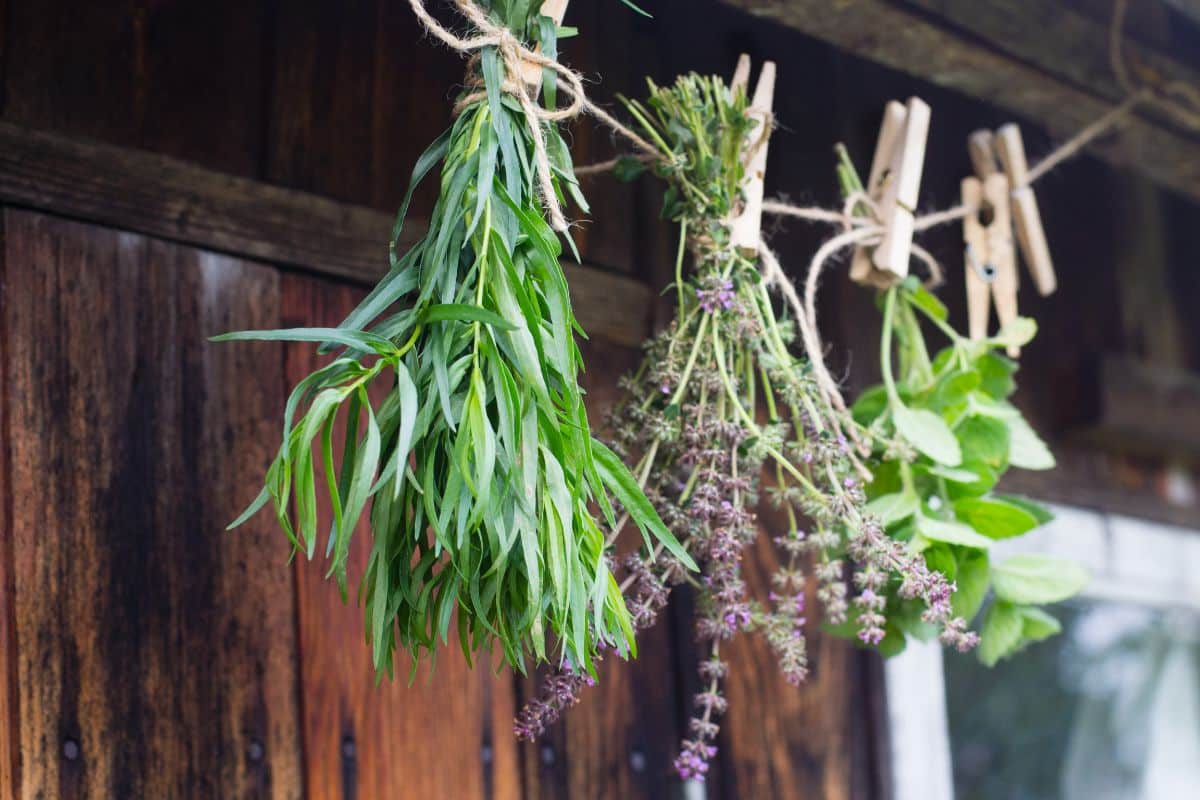
In the list below, you’ll find the absolute best culinary herbs for air drying and hang drying. These herbs are all easy to grow in home gardens, and once dried, they make delicious spice blends, dried herb powders, and herbal teas too. Plus, if you hang dry these plants, you can enjoy the charming aesthetic and even perfume your home with the rich fragrance of these flavorful plants!
Jump to:
- 14 best herbs for air drying and hanging
- 1. Lavender (Lavandula spp.)
- 2. Summer savory (Satureja hortensis)
- 3. Winter savory (Satureja montana)
- 4. Sage (Salvia officinalis)
- 5. Thyme (Thymus vulgaris)
- 6. Marjoram (Origanum majorana)
- 7. Parsley (Petroselinum crispum)
- 8. Dill (Anethum graveolens)
- 9. Chamomile (Matricaria chamomilla)
- 10. Lemongrass (Cymbopogon spp.)
- 11. Bay leaves (Laurus nobilis)
- 12. Lemon verbena (Aloysia citrodora)
- 13. Echinacea (Echinacea purpurea)
- 14. Lovage (Levisticum officinale)
- Frequently asked questions
- Summary
14 best herbs for air drying and hanging

Herbs with high water content, like basil and cilantro, typically need to be dried quickly, either with an oven or a food dehydrator. But the plants in the list below can all be hang or air dried with little fuss!
Some of these herbs can be loosely bundled with twine and then hung from strings until they’re nice and crispy (I find using a paperclip to attach the herb bundles to string is super handy!) Other herbs in this list are more delicate and prone to breaking, so I recommend spreading them out in a single layer on a baking sheet or hanging them to dry inside a paper bag to catch any brittle stems and flower petals.
How long it will take for herbs to fully dry will depend on the temperature in your home and the herbs you’re working with, but most herbs will air dry in about 1 to 2 weeks. Keep the herbs out of direct sunlight while they’re drying and avoid moisture and high humidity levels if possible, as this can lead to leaf discoloration and/or mold. You’ll know your herbs are fully dried when they can be easily crumbled between your fingertips!
1. Lavender (Lavandula spp.)
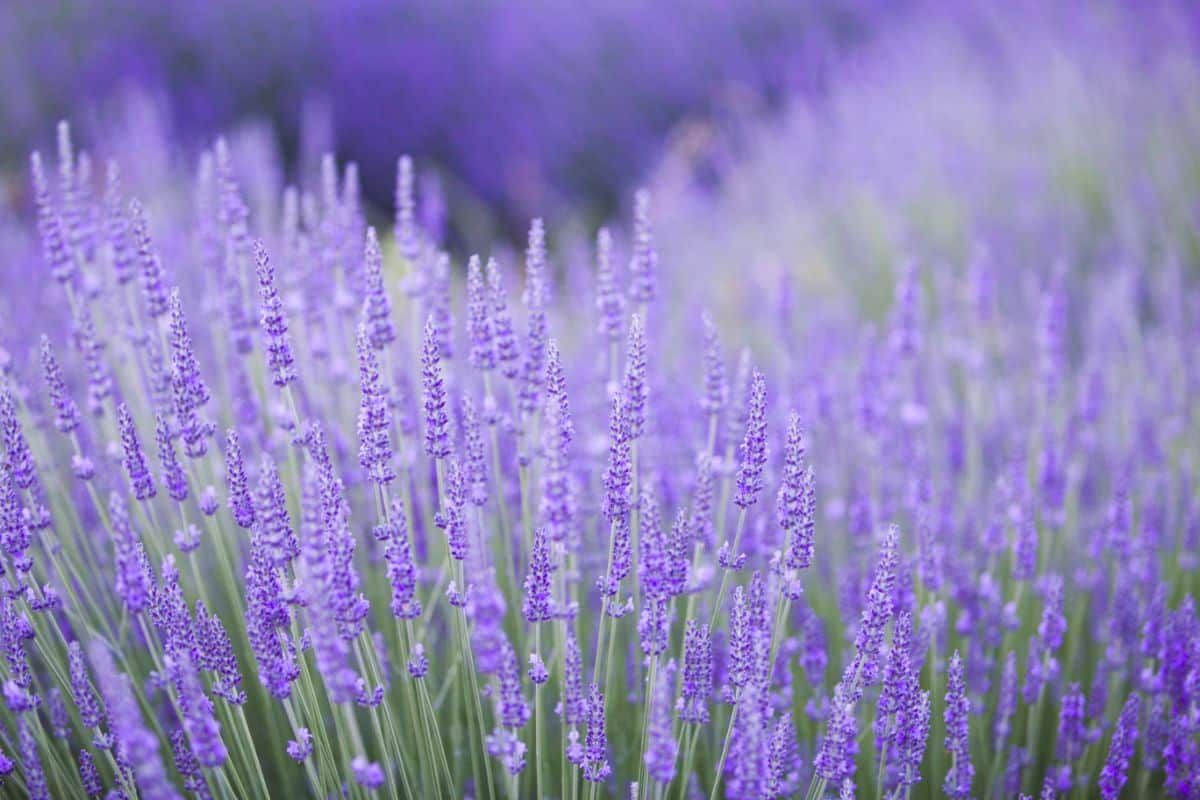
| Plant name: | Lavender |
| Light requirements: | Full sun |
| Water requirements: | Low |
| Growing zone: | Zones 5 to 9 |
| Approximate drying time? | 2 to 4 weeks |
Fragrant and delicious, lavender is both a cooking herb and an ornamental plant that can be used for crafting or to attract pollinators to your garden. If you’re new to growing lavender, you’ll find there are many types to choose from, including English lavender (the most common type of lavender used for cooking), as well as lavender varieties that can tolerate humid environments. Most lavender plants thrive in dry areas with plenty of sun, and they tend to be easy to care for because they don’t need too much water!
While you can use edible lavender for desserts, teas, and jams, lavender can also be dried to make darling bouquets, or it can be worked into homemade soaps, eye pillows, and more. Regardless of how you choose to use your lavender, if you want to keep this herb around for a while, you’ll need to dry out your plant stems and leaves first. To dry lavender, bundle a small handful of stems loosely with garden twine and hang them up to dry in a cool, dry place for a few weeks.
2. Summer savory (Satureja hortensis)
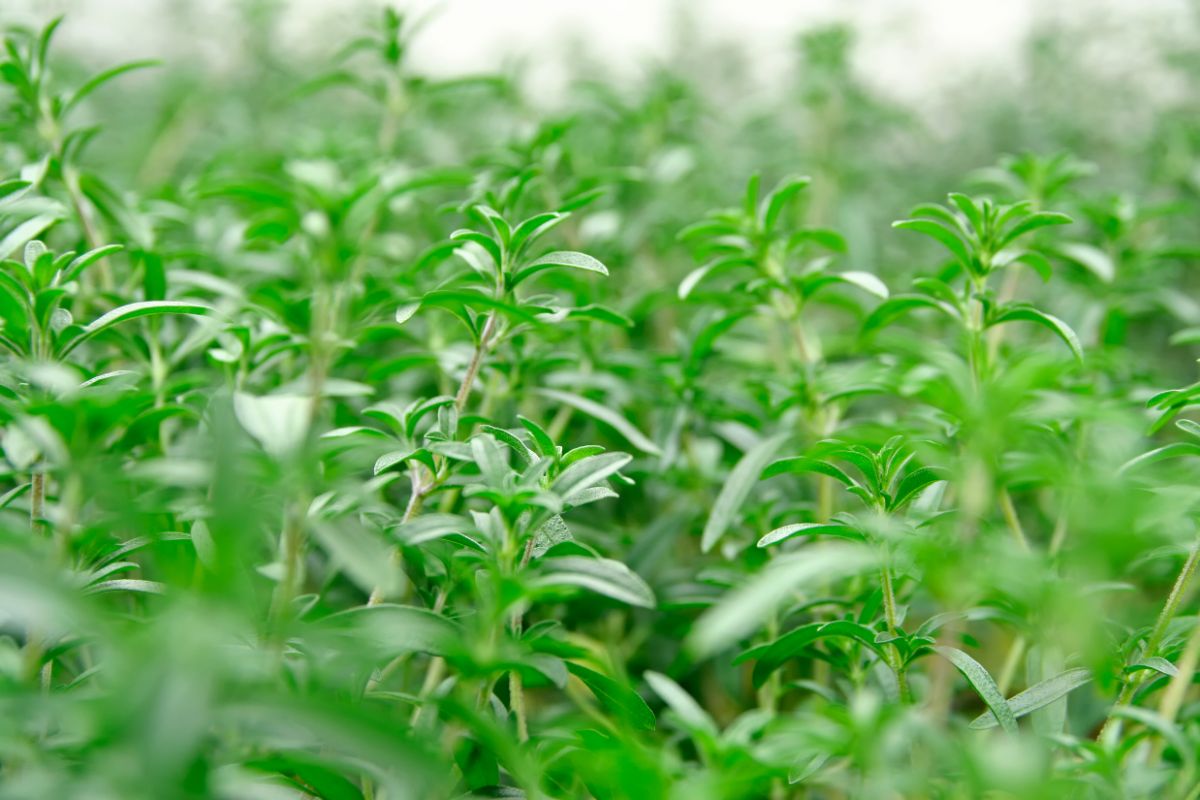
| Plant name: | Summer savory |
| Light requirements: | Full sun |
| Water requirements: | Moderate to low |
| Growing zone: | Zones 1 to 11 |
| Approximate drying time? | 2 to 4 weeks |
Summer savory is a less commonly used culinary herb, but it adds nuance and a deep, slightly spicy flavor to soups, casseroles, and other dishes too. While summer savory can be used in just about any recipe where you’d normally add thyme, this herb really comes alive when paired with fish and poultry. Unlike winter savory, summer savory grows as an annual, and it tends to be easy to find at plant nurseries.
While you can dry summer savory and the other herbs on this list with a dehydrator, woody-stemmed herbs have low moisture content, which means they dry well in bundles. When hang drying summer savory, be sure to locate your herbs out of direct sunlight as the sun can cause herbs to discolor. If you’re worried about your herbs dropping leaves as they dry, hang your herbs loosely inside a small paper bag to catch any falling stems and leaves.
3. Winter savory (Satureja montana)
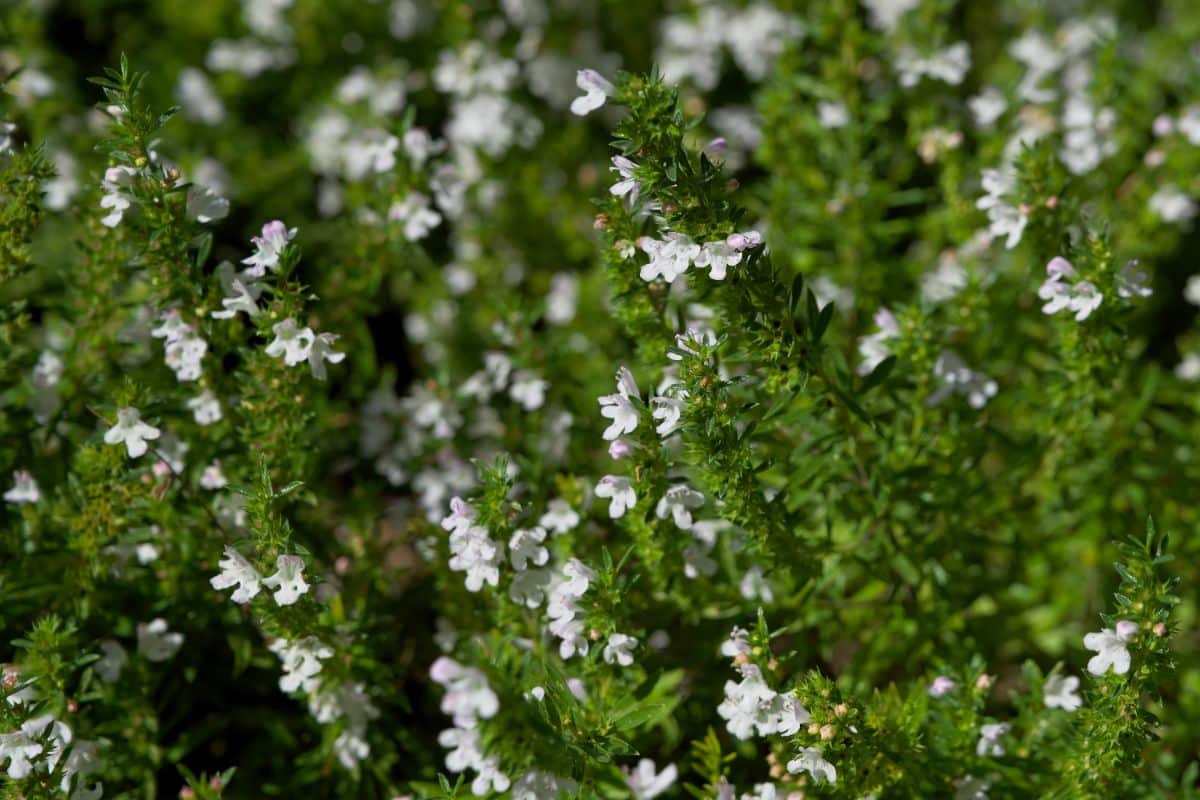
| Plant name: | Winter savory |
| Light requirements: | Full sun |
| Water requirements: | Moderate to low |
| Growing zone: | Zones 6 to 9 |
| Approximate drying time? | 2 to 4 weeks |
Winter savory is a bit harder to find than summer savory, but you can usually track this plant down at local plant nurseries. If you’re having trouble finding winter savory plants, you can always take cuttings if your friends happen to grow this herb, or you can grow winter savory from seed. When in bloom, winter savory flowers are magnets for bees, while the plant’s edible leaves are rich and savory with notes of mint, thyme, and marjoram.
Like summer savory, winter savory doesn’t have a lot of moisture in its leaves, so it’s a good candidate for air drying. While you can hang dry this plant, you can also spread it out on a single layer on a mesh drying rack and allow it to dry out of direct sunlight. For another electricity-free herb drying option, you can place winter savory or other herbs on a sheet pan in your car on a hot day and allow the herbs to dry naturally in the heat!
4. Sage (Salvia officinalis)
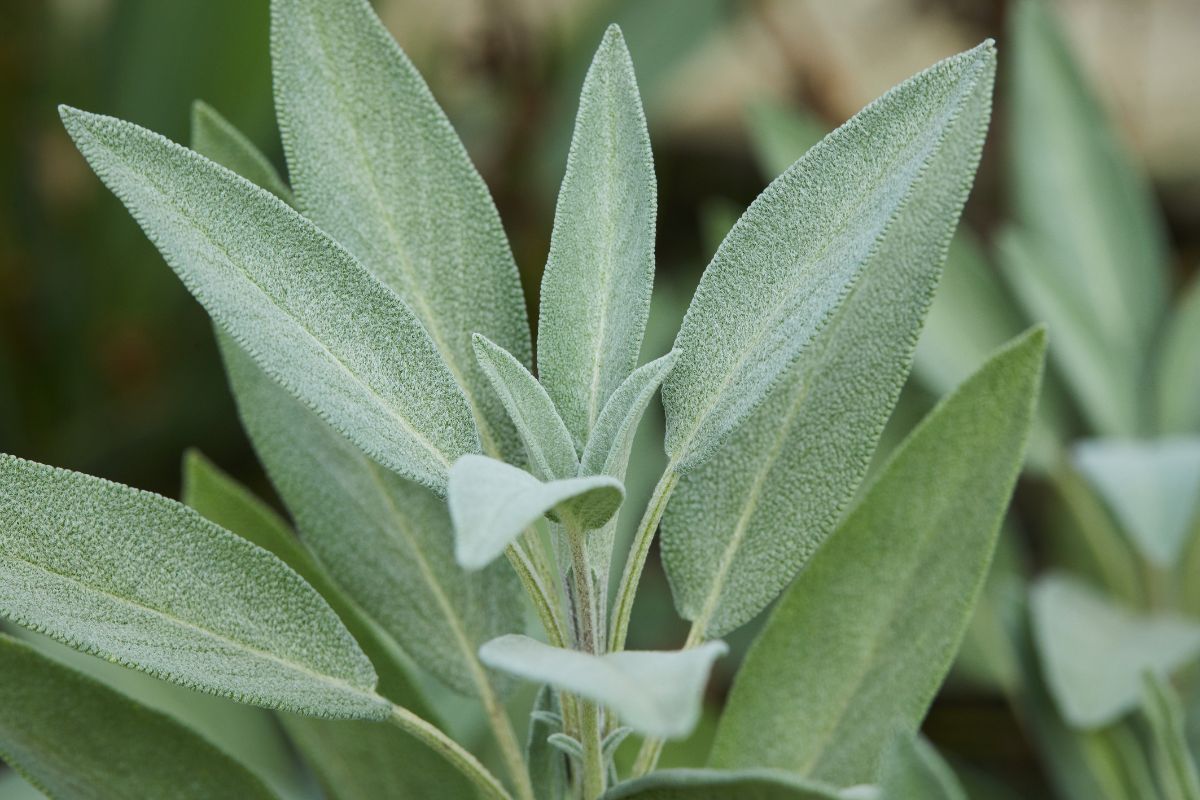
| Plant name: | Sage |
| Light requirements: | Full sun |
| Water requirements: | Moderate to low |
| Growing zone: | Zones 4 to 10 |
| Approximate drying time? | 1 to 2 weeks |
A must-have around the holidays, sage has a warm and earthy flavor that works well with roasted vegetables and meats, but it can also be used in less traditional dishes like pizza. Culinary sage typically has green leaves, but you can find more colorful cultivars like purple sage or tricolor sage to add more vibrancy to your herb beds. While sage is mostly known for its leaves, this plant also blooms prolifically, and its sweet, purple flowers will beckon bees, butterflies, and other pollinators to your garden space.
If you want to use sage throughout the winter months, you can freeze the leaves in airtight baggies, or you can dry the leaves and store them in your spice cabinet. Sage leaves can be dried on wire racks, or you can bundle 5 to 10 stems of sage together with a rubber band or twine and hang them out of direct sunlight. Sage leaves will be completely dry and ready for storage when you can easily crumble them between your fingers.
5. Thyme (Thymus vulgaris)
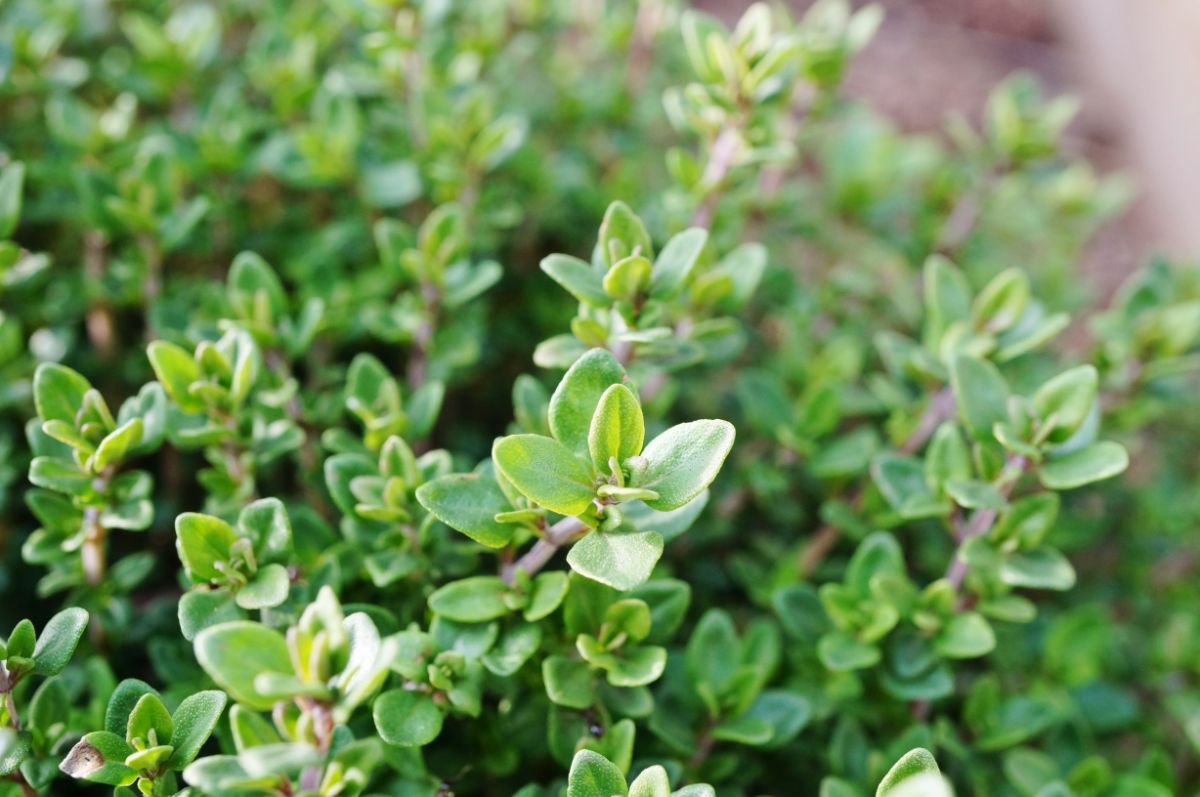
| Plant name: | Thyme |
| Light requirements: | Full sun |
| Water requirements: | Low |
| Growing zone: | Zones 5 to 9 |
| Approximate drying time? | 3 days to 2 weeks |
Another favorite herb for cozy autumn and winter fare, thyme is a compact plant that can be cultivated in container gardens, patio spaces, or larger garden beds. Thyme doesn’t need much water as it grows, making it relatively low maintenance, and it can even grow on sunny windowsills if you have the space for it. Garden thyme is the most popular thyme variety for cooking, but you can also grow more unique cultivars like lemon thyme and orange thyme.
Like many other herbs, thyme can be harvested a little bit at a time throughout the growing season, or you can take a larger harvest of leaves in early summer. Just keep in mind that thyme is a perennial plant, and it usually overwinters well, so there’s no need to harvest the entire plant in the fall. Thyme bundles can be hung in dry spaces in your home, or you can dry this herb on sheet pans if you’re worried about the dried leaves scattering.
6. Marjoram (Origanum majorana)
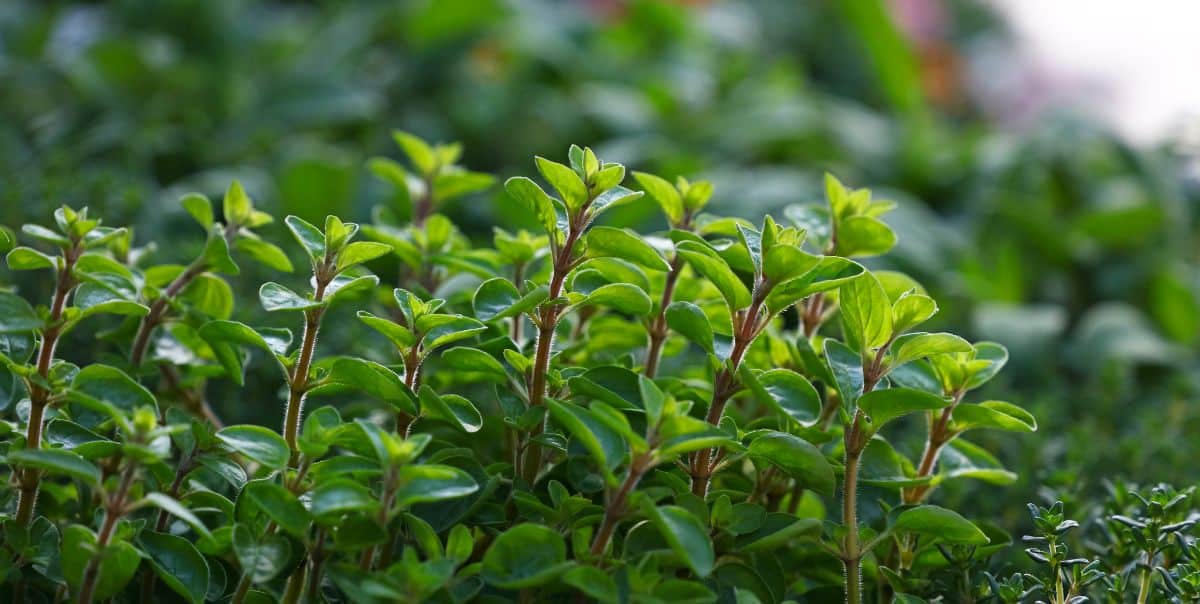
| Plant name: | Marjoram |
| Light requirements: | Full sun |
| Water requirements: | Low |
| Growing zone: | Zones 9 to 10 |
| Approximate drying time? | 1 to 2 weeks |
Citrusy, earthy, and a bit woodsy in flavor, marjoram tastes a bit like oregano and thyme, but it has a flavor all its own. Compared to plants like sage, marjoram isn’t as commonly grown in home gardens, but we hope that changes because marjoram is incredibly tasty and easy to keep. Plus, marjoram is highly coveted by pollinators if you allow it to flower!
While marjoram grows perennially in zones 9 and 10, this herb is cultivated as an annual in cooler spots. That means that if you live in an area where marjoram won’t overwinter, you’ll probably want to harvest your entire plant before the weather gets too cold in fall. It’s usually easy to dry marjoram with the stems and leaves intact and then smooth the leaves off the stems after the herb has finished drying.
7. Parsley (Petroselinum crispum)
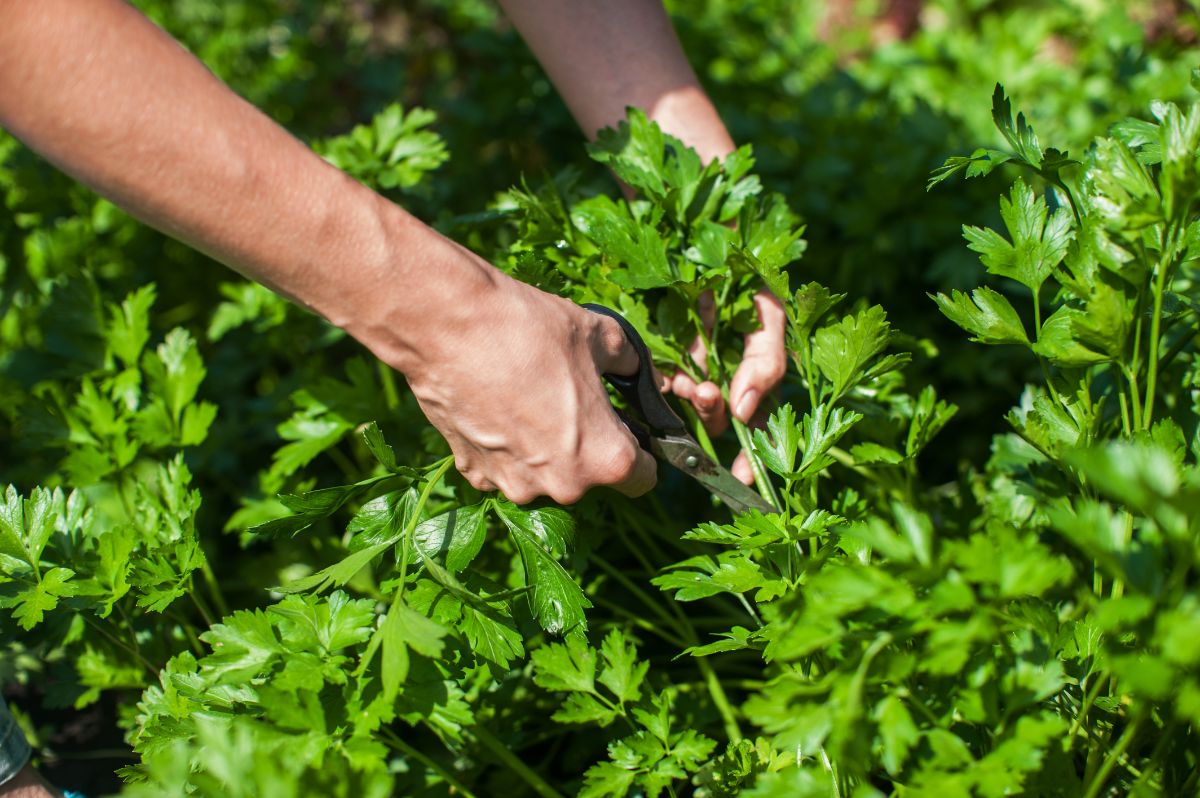
| Plant name: | Parsley |
| Light requirements: | Full sun to part shade |
| Water requirements: | High to moderate |
| Growing zone: | Zones 2 to 11 |
| Approximate drying time? | 2 weeks |
Often used as a garnish, parsley also makes a refreshing addition to salads and vegetable bowls, and it can even be blended into colorful sauces like chimichurri. But if you have more fresh parsley than you know what to do with, you’ll probably want to preserve your harvest to prevent your homegrown herbs from going to waste. Like many other herbs, parsley does freeze well, but it’s also a breeze to dry, and it stores well in spice cabinets.
While parsley technically has tender stems, this herb can dry well with hang drying as long as you keep the herb out of direct light as it dries. That said, parsley can also be dried in a food dehydrator, microwave, or your oven set at the lowest setting, so it’s really up to you how you choose to dry this herb. While hang drying is effective, you may get more uniformly colored dried herbs if you dry parsley quickly in a dehydrator.
8. Dill (Anethum graveolens)
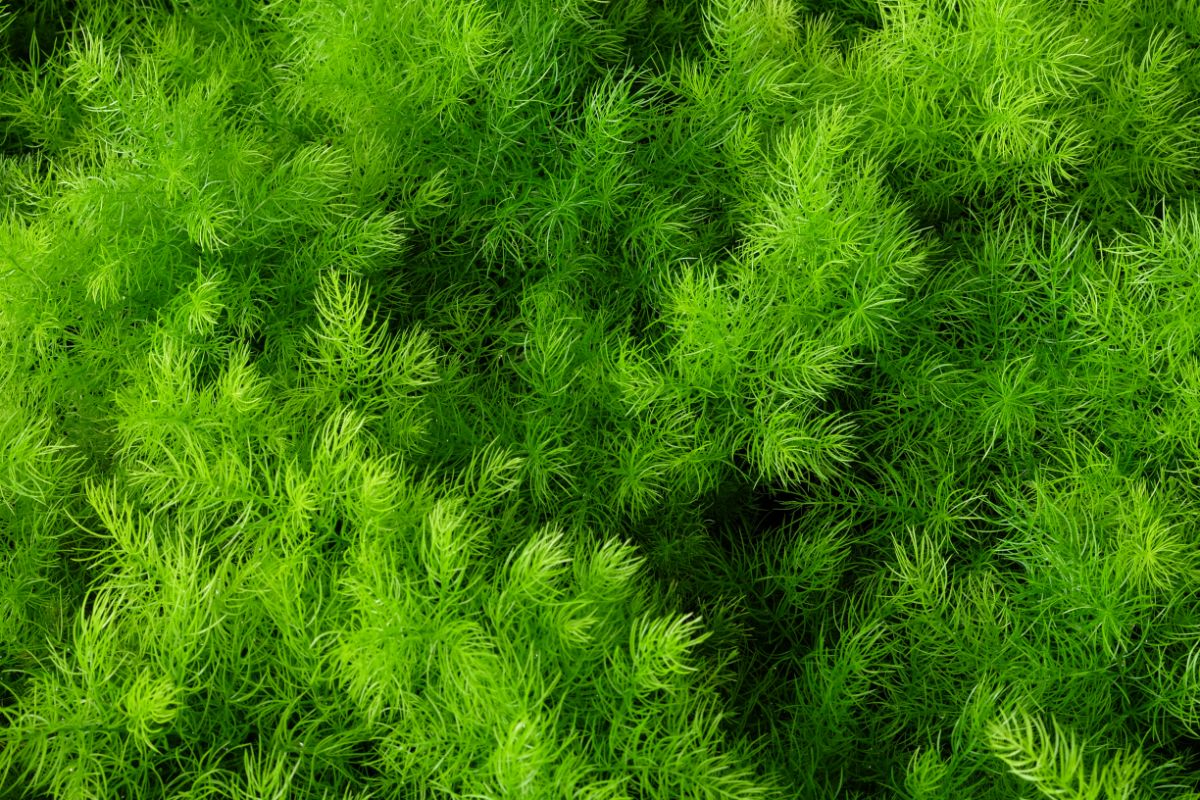
| Plant name: | Dill |
| Light requirements: | Full sun to part shade |
| Water requirements: | High to moderate |
| Growing zone: | Zones 2 to 11 |
| Approximate drying time? | 2 weeks |
Like parsley, dill has tender stems, and it can be dried either with a dehydrator or hang drying. If you decide to air dry dill, make sure your herb bundles aren’t so thick that they don’t allow air to circulate. Instead, only bundle up a few stems of dill together and space the herb bundles apart from each other so air can flow properly.
As a cool-weather herb, dill plants aren’t ideal for summer gardens, and spring-planted herb generally bolts at the first signs of heat. When dill bolts, the plant’s flavor changes, which is why many gardeners harvest their entire dill plants in early summer. However, if you decide to leave dill plants in your garden over the summer months, these plants will attract pollinators, and they also serve as host plants for swallowtail butterflies!
9. Chamomile (Matricaria chamomilla)
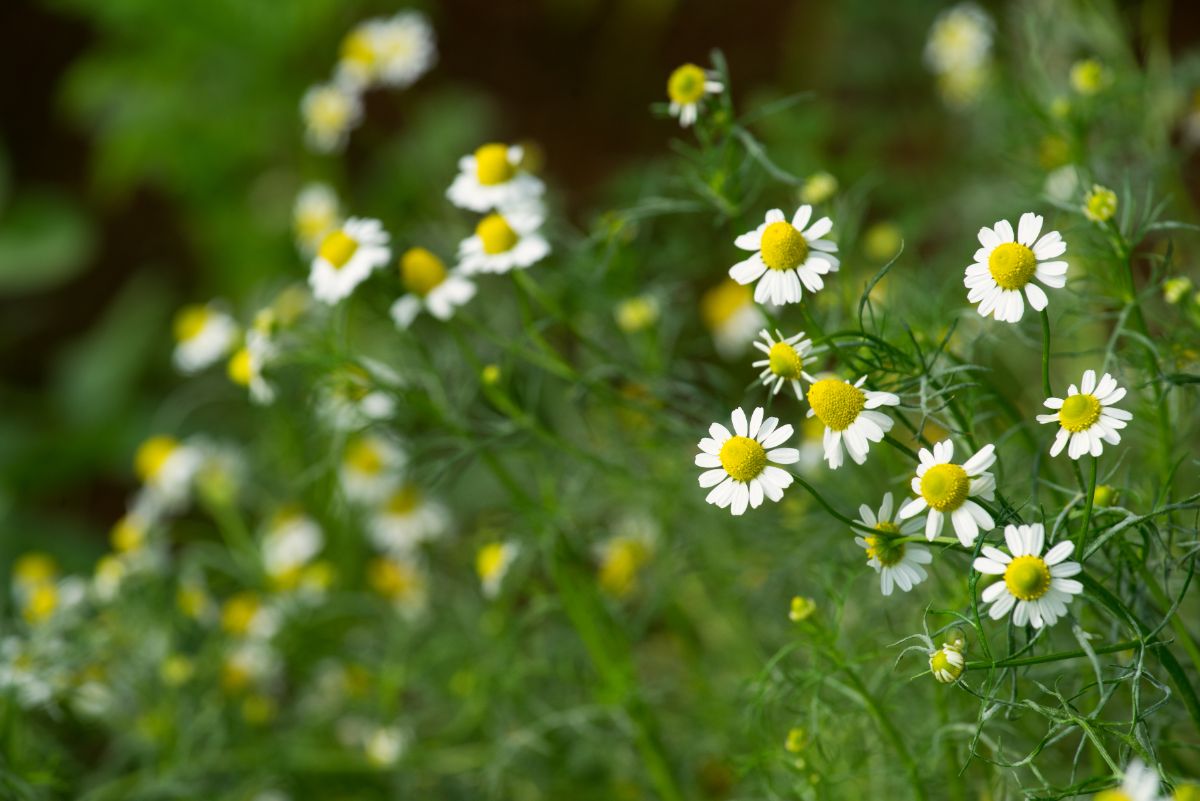
| Plant name: | Chamomile |
| Light requirements: | Full sun to part shade |
| Water requirements: | Moderate |
| Growing zone: | Zones 2 to 9 |
| Approximate drying time? | 1 to 2 weeks |
Chamomile is famously used to craft herbal teas, but chamomile flowers can also be steeped into jams and jellies or baked into desserts. With a mild yet refreshing floral flavor, chamomile has a truly unique taste, and the dainty flowers can also be used as garnishes or to make crafts. If you like the thought of using chamomile in non-edible ways, you can use this herb to make soaps, bath salt blends, salves, and other beauty products too!
You can usually find two common types of chamomile: Roman chamomile and German chamomile. Both varieties can be used to make herbal teas; however, German chamomile is an annual plant, while Roman chamomile grows perennially. Regardless of what type of chamomile you grow, chamomile can either be hang dried in bundles, or you can pop the fresh flowers of the plant’s stems and dry them in a single layer on a baking sheet.
10. Lemongrass (Cymbopogon spp.)

| Plant name: | Lemongrass |
| Light requirements: | Full sun |
| Water requirements: | High |
| Growing zone: | Zones 9 to 10 |
| Approximate drying time? | 1 to 2 weeks |
Often used to elevate the tastes of soups and curries, lemongrass is a tropical plant that only grows perennially in zones 9 and 10. When fall arrives, some gardeners choose to overwinter their lemongrass plants indoors, but if you don’t want to take care of lemongrass during the winter, you can also harvest your entire lemongrass crop before the temperatures drop. Lemongrass can be frozen or dried, depending on your preferences and how much space you have available in your kitchen.
When it comes to drying lemongrass, you have several different options. Lemongrass can be dried in a dehydrator, or it can be hang dried out of direct sunlight. When hang drying, you can either gather lemongrass stalks in small bunches, or you can peel the individual leaves off the plant, thread a string through them, and hang them up to dry like an edible and fragrant garland!
11. Bay leaves (Laurus nobilis)

| Plant name: | Bay leaves |
| Light requirements: | Full sun to part shade |
| Water requirements: | Moderate to low |
| Growing zone: | Zones 8 to 10 |
| Approximate drying time? | 2 weeks |
Bay leaves are added to soup stocks and many other dishes, but most gardeners never think to grow their own bay. Part of that has to do with the fact that bay laurel plants are not very cold hardy, and they only grow perennially in zones 8 through 10. However, bay plants grow well in pots, and they can be kept as houseplants in cooler climates if you want to grow your own bay leaves!
Bay leaves can be dried individually on drying racks, or you can snip off a branch of a larger bay plant and dry the plant whole. If you need to prune bay plants, the best time to do it is in mid to late spring, and you can save and dry your prunings to reduce waste and add free spices to your spice cabinet. If you’re growing bay laurels indoors, these plants will do just fine in standard terracotta pots, but larger trees will need a pot that is at least 24” in diameter.
12. Lemon verbena (Aloysia citrodora)
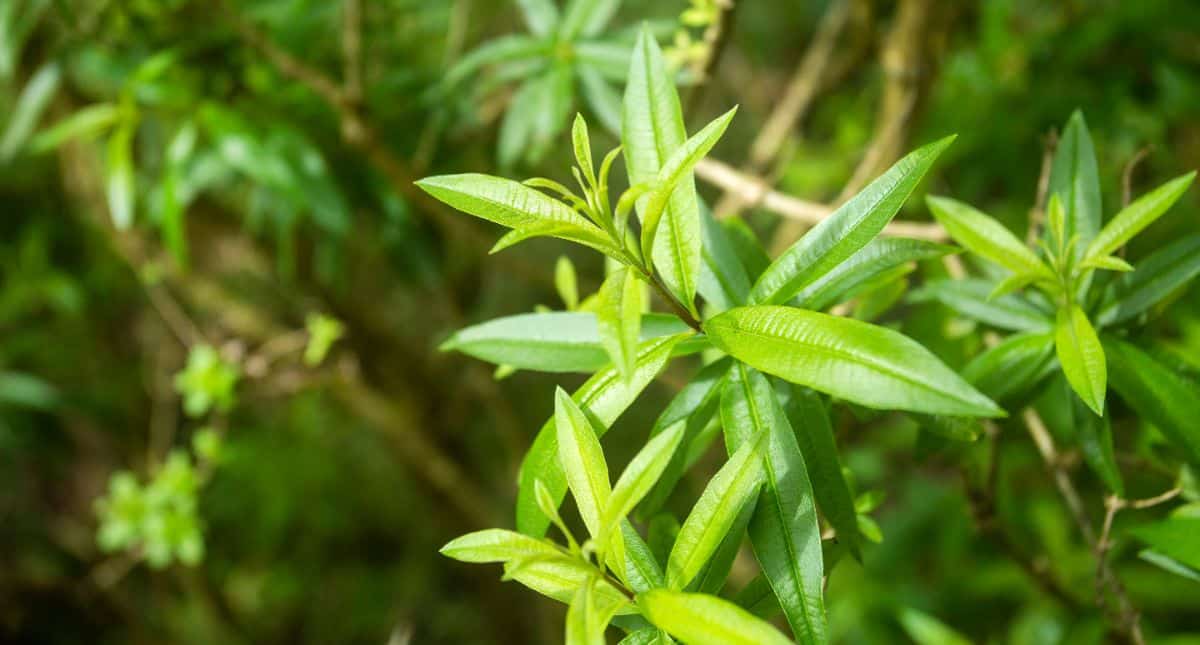
| Plant name: | Lemon verbena |
| Light requirements: | Full sun to part shade |
| Water requirements: | Moderate to low |
| Growing zone: | Zones 8 to 10 |
| Approximate drying time? | 1 to 2 weeks |
Lemon verbena is an interesting herb that isn’t as commonly grown in gardens, mostly because it doesn’t overwinter well in cool areas. But lemon verbena can be kept indoors during the winter, or you can grow the plant as an annual and harvest the leaves for drying before the cold weather hits. Lemon verbena leaves can be used in hot and cold beverages, as well as desserts and other dishes, and this herb has a unique and fruity flavor that tastes a bit like Froot Loops!
Because lemon verbena plants have sturdy stems, they’re super easy to gather in bundles for hanging. What’s more, these plants are also very low in moisture, and they only need to be dried for a week or two to get them perfectly dry. If you need more space for hanging up herbs, you may want to try hanging your herbs from a laundry rack, or you can invest in a handy mesh herb dryer, which will allow you to dry tons of herbs in a small space!
13. Echinacea (Echinacea purpurea)
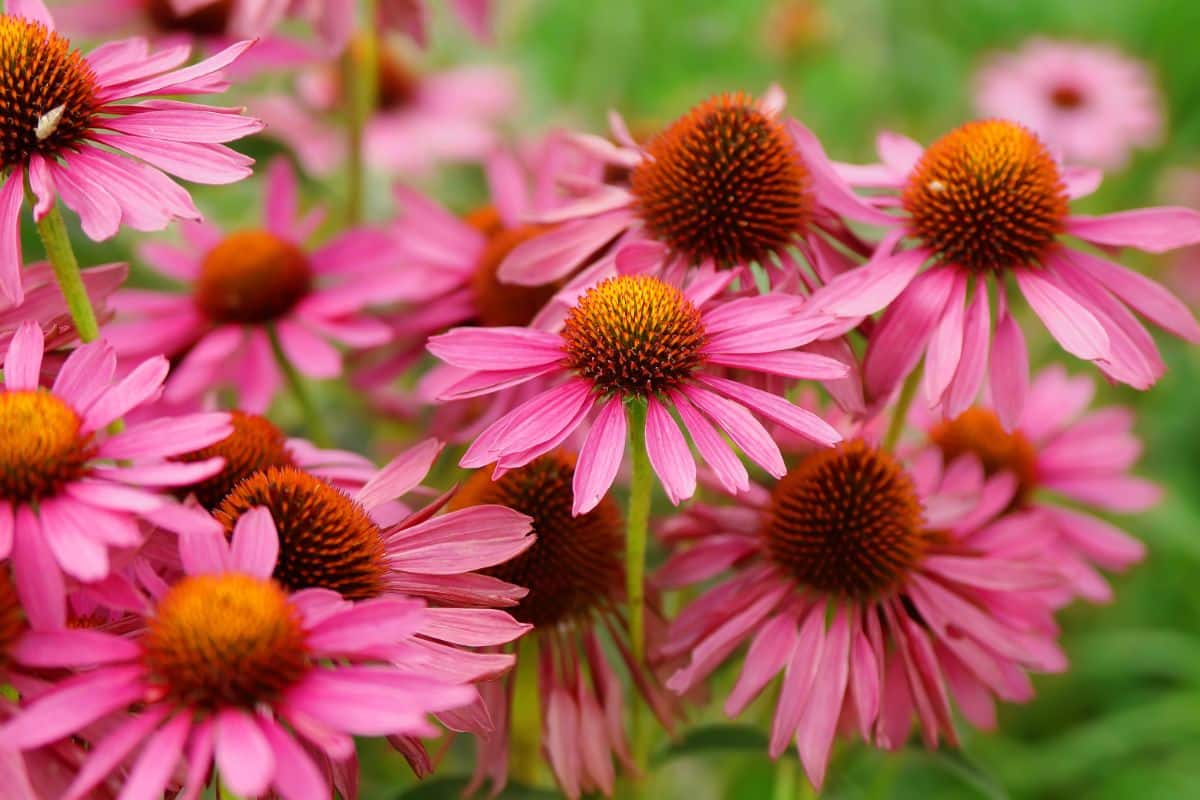
| Plant name: | Echinacea |
| Light requirements: | Full sun to part shade |
| Water requirements: | Moderate to low |
| Growing zone: | Zones 3 to 9 |
| Approximate drying time? | 2 weeks |
Echinacea isn’t exactly a culinary herb, but it is occasionally used in herbal teas, and it can even be cooked into soup. Also known as coneflower, echinacea plants are mostly grown as ornamentals, and they’re some of the best pollinator plants you can find. And while echinacea can be dried for home preserving, we encourage you to leave some of the flowers in your garden in autumn as the seedheads will feed wild birds during winter!
Echinacea plants are relatively drought tolerant, and the plants don’t contain much water after harvesting. You can bundle echinacea stems together and hang dry them, or you can clip off the flowerheads and leaves and dehydrate them on a sheet pan. Once dried, crumble echinacea leaves and flowers and brew them in a tea or add them to other recipes.
14. Lovage (Levisticum officinale)
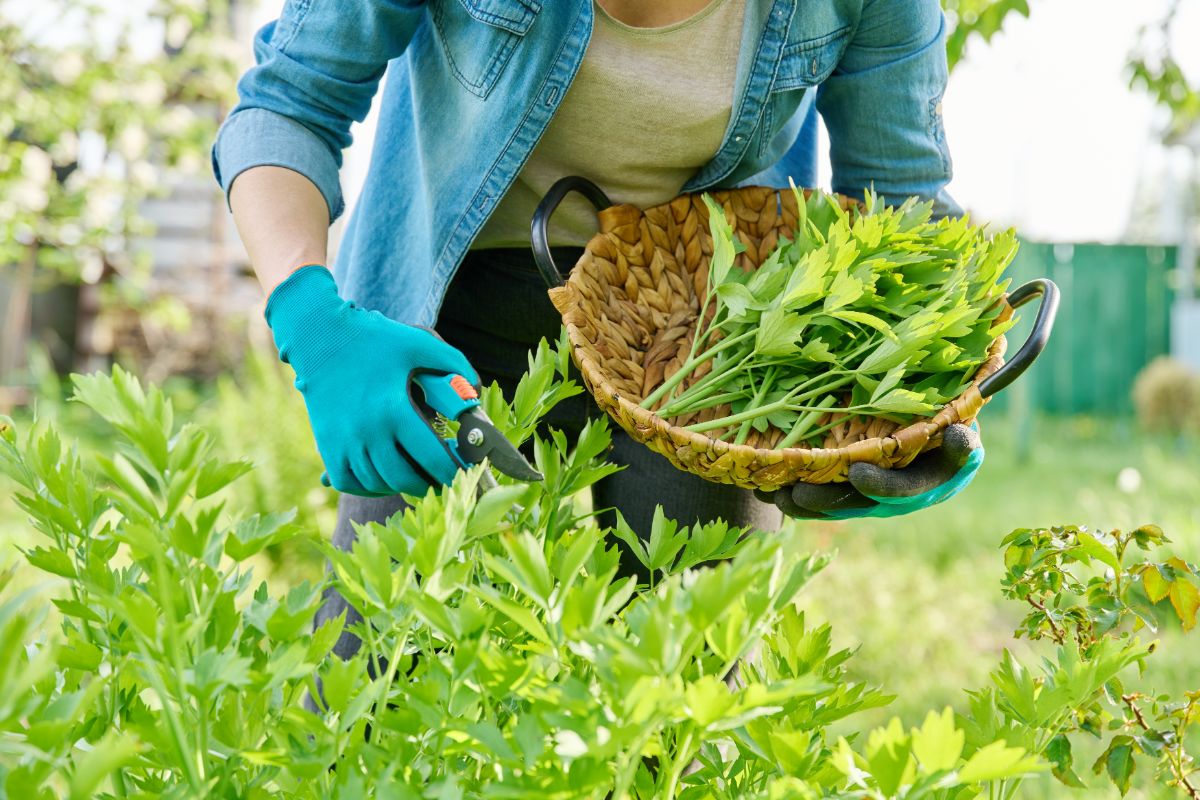
| Plant name: | Lovage |
| Light requirements: | Full sun to part shade |
| Water requirements: | Moderate |
| Growing zone: | Zones 3 to 9 |
| Approximate drying time? | 1 to 2 weeks |
Lovage is an overlooked herb that can be used in many different dishes in the kitchen. A close relative of celery, lovage can be used anywhere you’d used celery stalks and leaves; however, lovage has a slightly sweeter and more intense flavor. Some gardeners choose to grow lovage instead of celery as this herb can tolerate hotter weather, and it grows perennially in most areas.
After drying lovage leaves, you can store them whole or grind them into a fine powder. Just remember that herbs don’t last as long if you grind them before storage, so you may want to wait until you’re ready to use your herbs to pulverize them. Once dried, lovage leaves can be blended with salt to make a celery salt substitute, or you can use the leaves in soups, stews, stocks, and other recipes.
Frequently asked questions
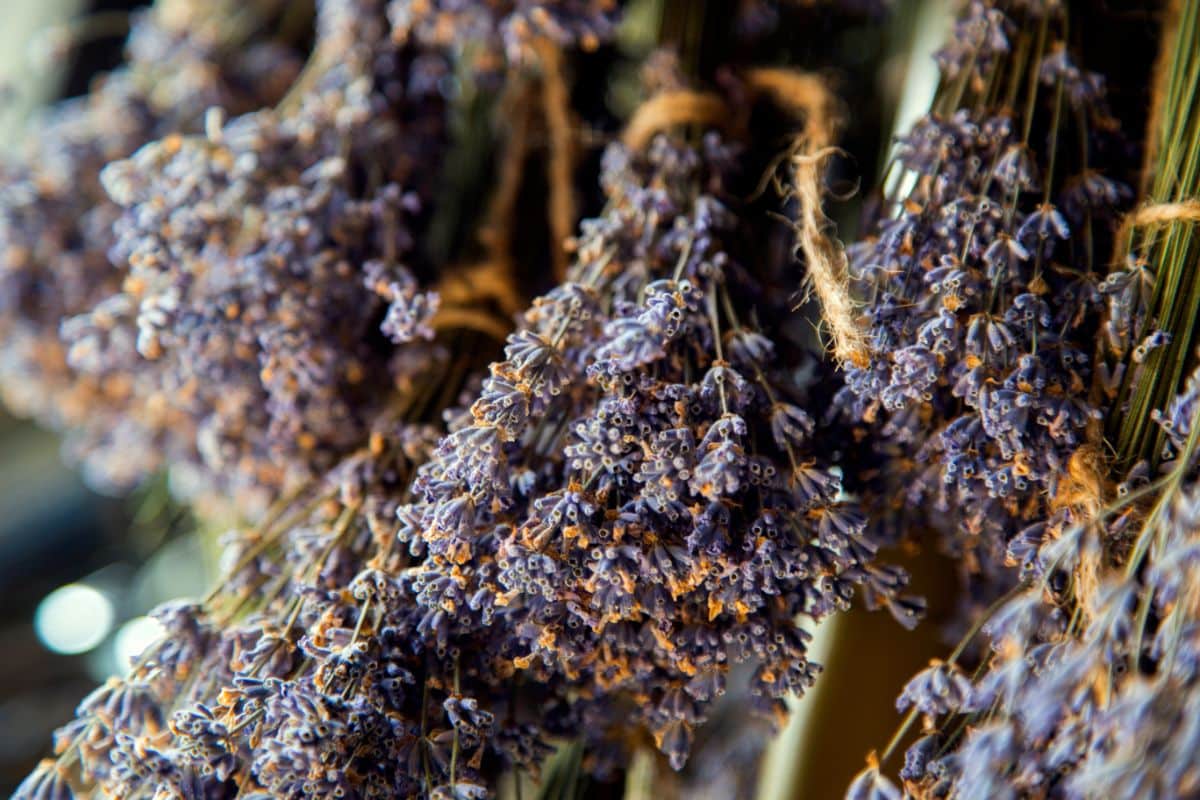
Dried herbs can last for a few years as long as they’re stored properly. But if you notice that your herbs feel moist or you can see mold in your spice containers, it’s time to toss out your herbs and start fresh. Keeping herbs in airtight packaging and storing them out of direct sunlight is the best way to preserve the shelf life of your herbs and prevent mold.
Different herbs contain different levels of moisture, and they may need to be dried for different lengths of time. For instance, very dry herbs like thyme typically only need to be dried for a few days, while bulkier herbs like sage will need to be dried for a week or two. The best way to determine if your herbs are fully dried is by touch – if the herbs can be crumbled between your fingers, they’re dry enough!
Air drying herbs is a cost-effective and efficient way to preserve lots of herbs in a short period of time. While dehydrators are useful, they only process limited batches of herbs at a time. Additionally, air drying doesn’t use any electricity, which makes it a budget-friendly and eco-friendly way to dry herbs!
Dried herbs should be stored in airtight packaging to preserve their shelf life and minimize moisture exposure. Glass spice bottles are a great choice for storing herbs, but you can also use old Mason jars or plastic baggies.
One of the best ways to grind dried herbs is with a dedicated coffee mill. Pick up a coffee mill that’s just for herbs, and don’t use it to grind coffee, as you don’t want the coffee flavors to taint your dried herbs. Another option is to invest in a mortar and pestle, which is an electricity-free way to grind herbs into fine powders and coarser grinds.
When properly stored, dried herbs will remain fresh for about 1 to 3 years. Herbs may still be edible even longer than that; however, the color and flavor of dried herbs do tend to degrade over time.
Summary
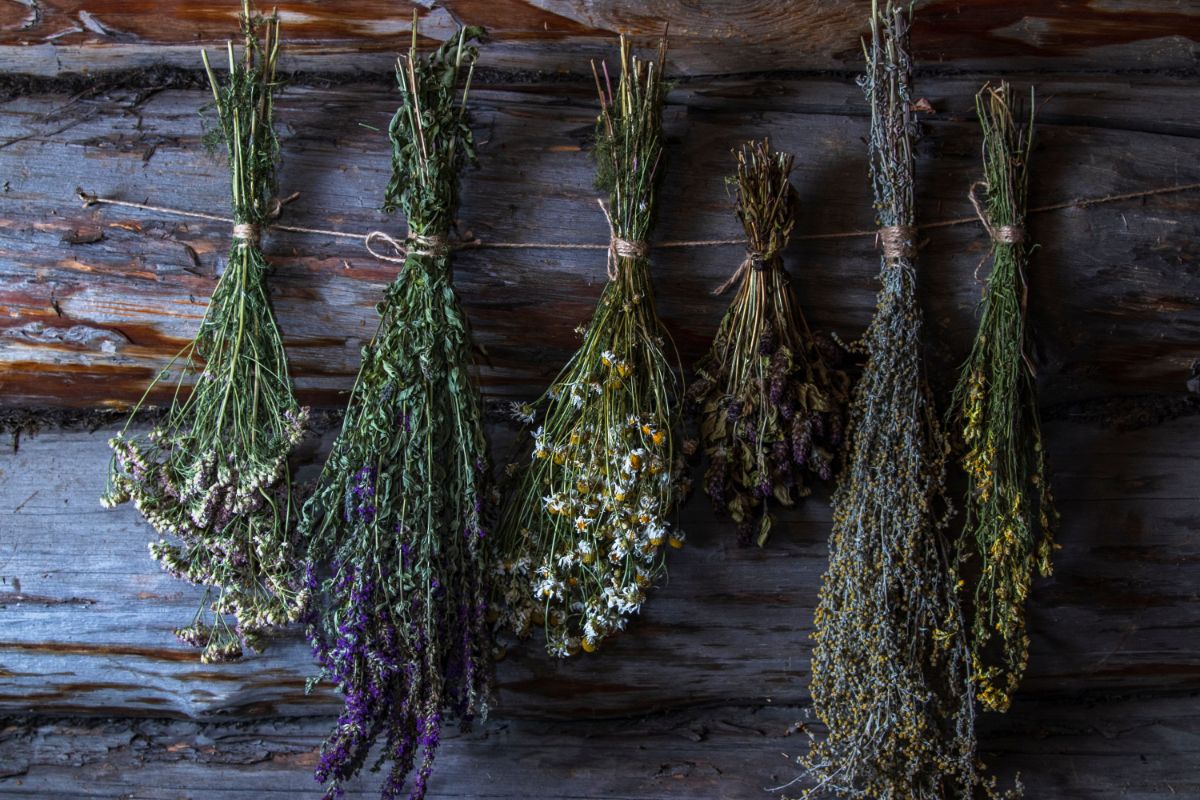
Drying your own herbs is a wonderful way to preserve your garden harvest and enjoy the freshest ingredients in your recipes throughout the seasons. And while dehydrators have their place, hang drying herbs is the most traditional way to preserve herbs, and it works well for most woody-stemmed and sturdy plants. Once you get the hang of drying herbs, you can also expand this process to preserve cut flowers like yarrow, baby’s breath, and echinops!
After drying your herbs, you can add them to your spice rack, blend them into recipes or brew them into teas. Some of the herbs we’ve covered today work well in hot and cold beverages, but for more herb garden inspiration, you may want to explore our guide on the best herbs to grow for herbal teas right here!
Need a place to dry your herbs? Check out these 7 Everyday Items You Can Use for Drying and Curing Herbs



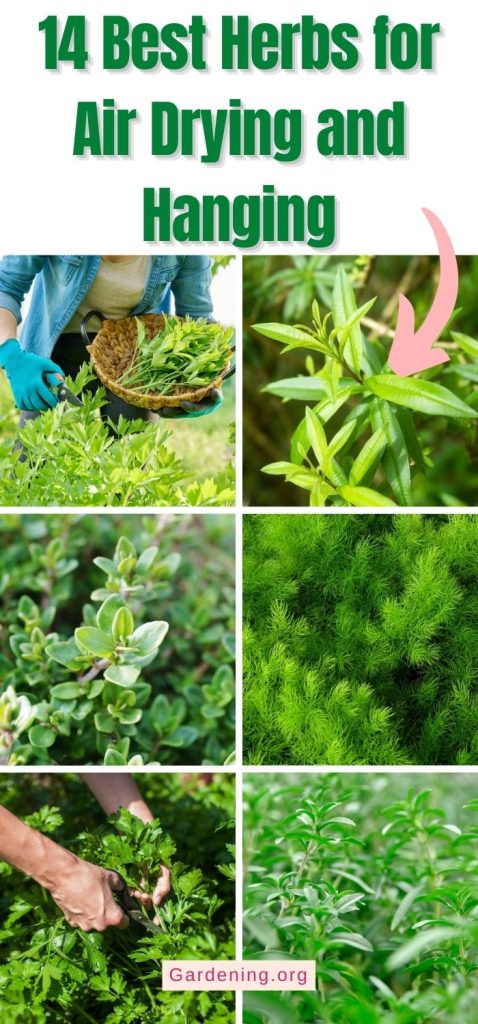
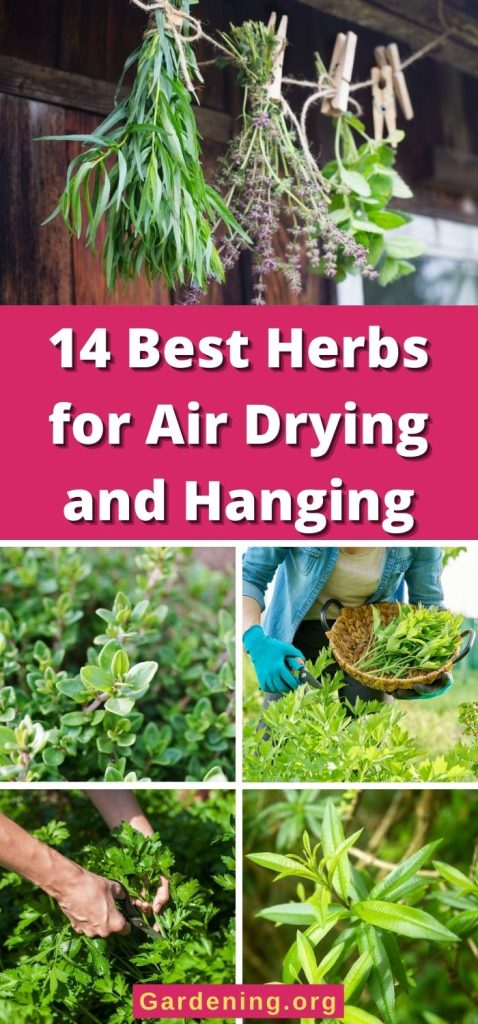
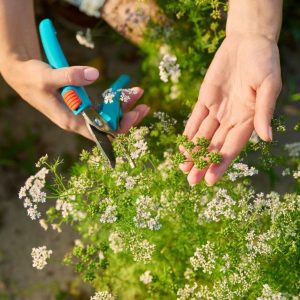
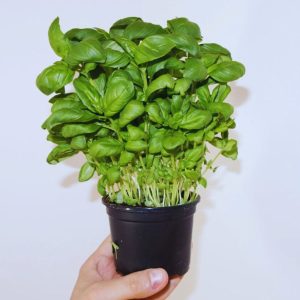
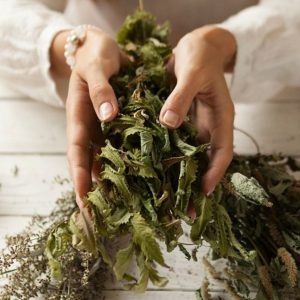
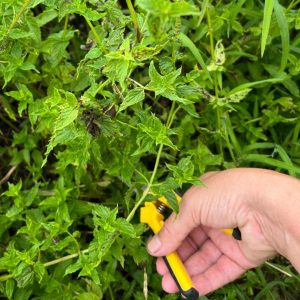
Leave a Reply